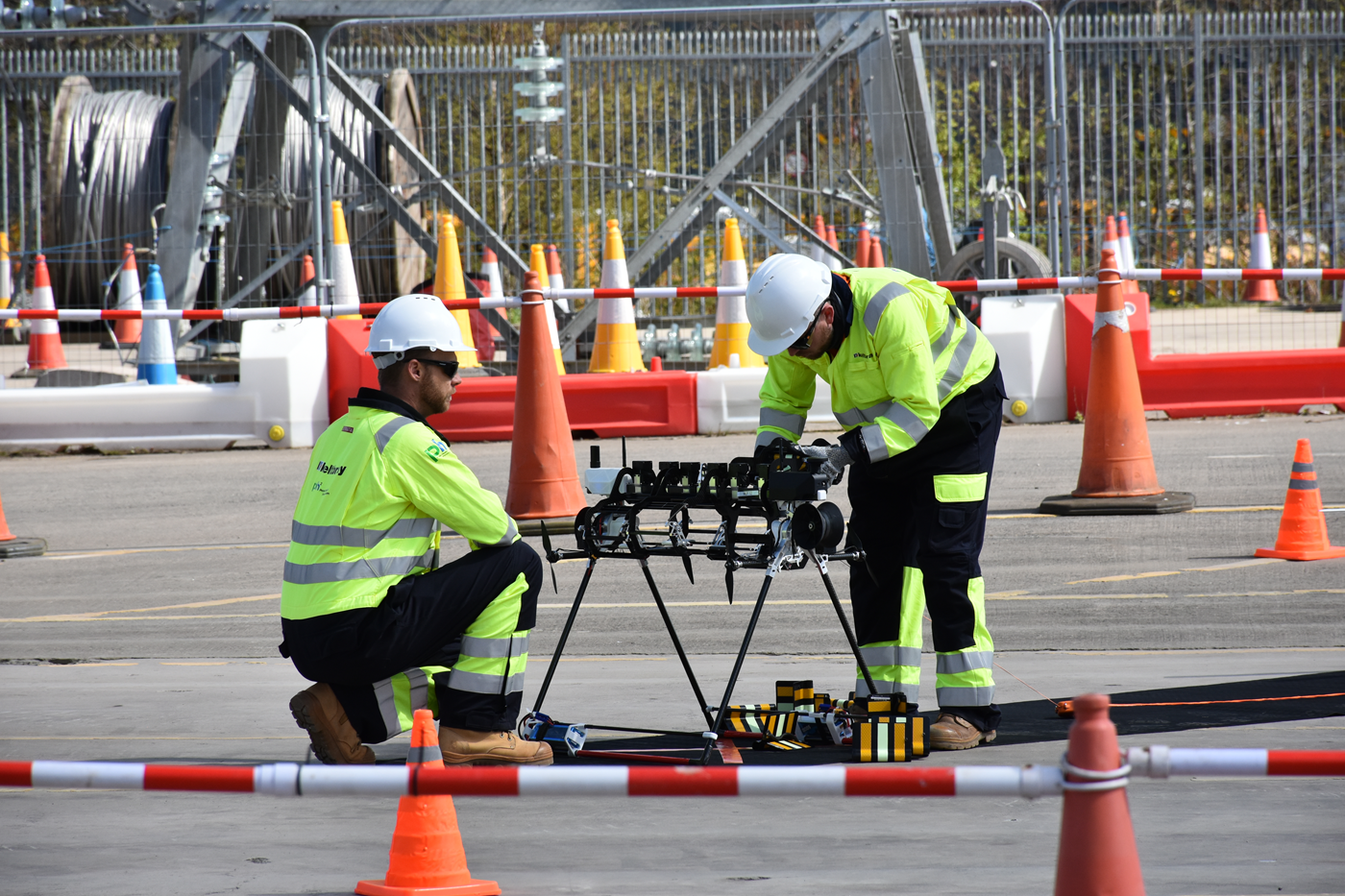Innovating for a nature-friendly energy transition: A Q&A on the installation of bird flight diverters using drone and robot technology
At SSEN Transmission we recognise the important role innovation has in achieving net zero as we embrace new technologies to become safer, smarter, greener, and faster on the transition to a low-carbon economy.
One innovation project supporting a nature-friendly energy transition is the installation of bird flight diverters (BFDs) using drone and robot technology. This project is being led by Lewis Bates, Assistant Overhead Line Engineer, who has driven the project forward since joining SSEN Transmission and recently hosted a Robots, Drones and Avian Protection Demo Day.
Graduate trainee Megan Ellis, from our Consents and Environment Team, attended the demo day and answers some questions about the project, including when we can expect to see the technology rolled out on our transmission network.
What was the demo day and why was it significant?
The day was organised in collaboration with US-based companies Fulcrum Air and Power Line Sentry. The purpose of the demonstration was to showcase Fulcrum Air’s drone and robot technology and Power Line Sentry’s Hawk Eye BFD to assess their suitability for our network. The companies have successfully installed the Hawk Eye BFD by drone on transmission infrastructure in the US, Canada, and Australia, and this event was significant for showcasing the groundbreaking technology on transmission lines in Great Britain.
The event took place over two days to accommodate for the volume of interest in the project, as people attended from a range of organisations to witness the technology in action. The day consisted of insightful presentations at The Hilcroft Hotel in Whitburn, followed by a demo at Keltbray’s training yard, one of our contractors who kindly offered their facilities over the two days.
What is the purpose behind the innovation project?
The integration of drone and robot technology addresses the need for safer, faster, and more cost-effective methods of installing BFDs on our transmission network. Traditional methods such as hot stick or mobile elevated working platforms (MEWP) come with safety risks, time constraints, and outage requirements. By eliminating the need for human presence on the line and providing access to remote or challenging terrain, drones offer a safe and efficient solution as we transition to net zero.
How does the drone and robot technology work?
During the demo at the training yard, we observed the drone manoeuvring the attached robot to the earth wire, where it installed 12 Hawk Eye BFDs before seamlessly returning to the ground. The process took around 90 seconds – a significant improvement on current methods. The robot also demonstrated BFD removal, a capability specifically requested by our innovation team and engineers. Fulcrum Air’s technology can install around 500 Hawk Eye BFDs per day at our recommended metre spacing, with GPS coordinates recorded. This streamlined installation, removal and maintenance process offers a 100% reduction in safety risk and is more time and cost-efficient than current methods.
What are bird flight diverters and when do we need to install them?
Bird flight diverters are installed on overhead lines to increase visibility and reduce collision risk in sensitive areas, identified through detailed bird surveys and risk assessments in project development. We always aim to avoid sensitive habitats and species abundant in our operational area in the north of Scotland, but where avoidance is not possible, we focus on mitigating potential environmental impacts. The installation of BFDs on high-risk spans is one such mitigation. As we expand our transmission network to meet climate targets, it's imperative that we design, build, and operate our assets in ways that protect and enhance the natural environment, safeguarding sensitive habitats and species along the way.
At the demo day we heard from Power Line Sentry about the design process of their Hawk Eye BFD and how it has been optimised to effectively reduce collisions. The company collaborated with ornithologists and bird ophthalmologists to understand key criteria for the product in terms of shape, colour, and design, including visibility in different light conditions. The streamlined installation process through the drone and robot technology is a huge benefit to being able to install BFDs efficiently and safely.
When can we expect to see this innovative technology rolled out on SSEN Transmission's network?
The proposed Skye Reinforcement Overhead Line project is set to be used as a pilot project for the technology, which if approved is expected to go into construction in 2025. This innovation is significant in enhancing safety and efficiency across our network, underscoring the importance of collaboration in ensuring the energy transition is a just transition for nature and people.
